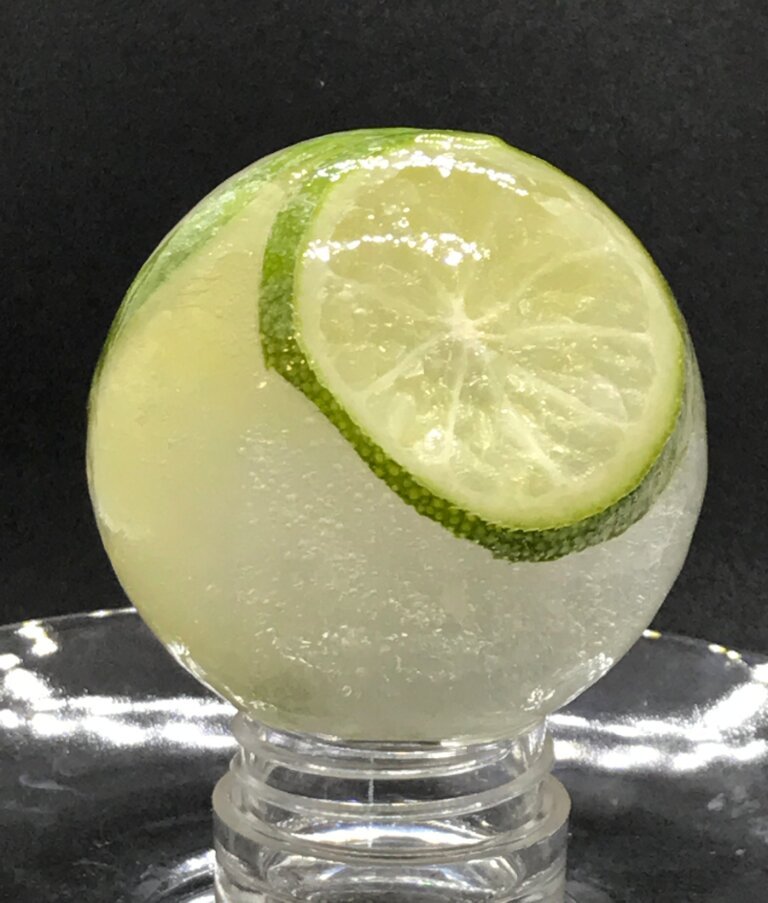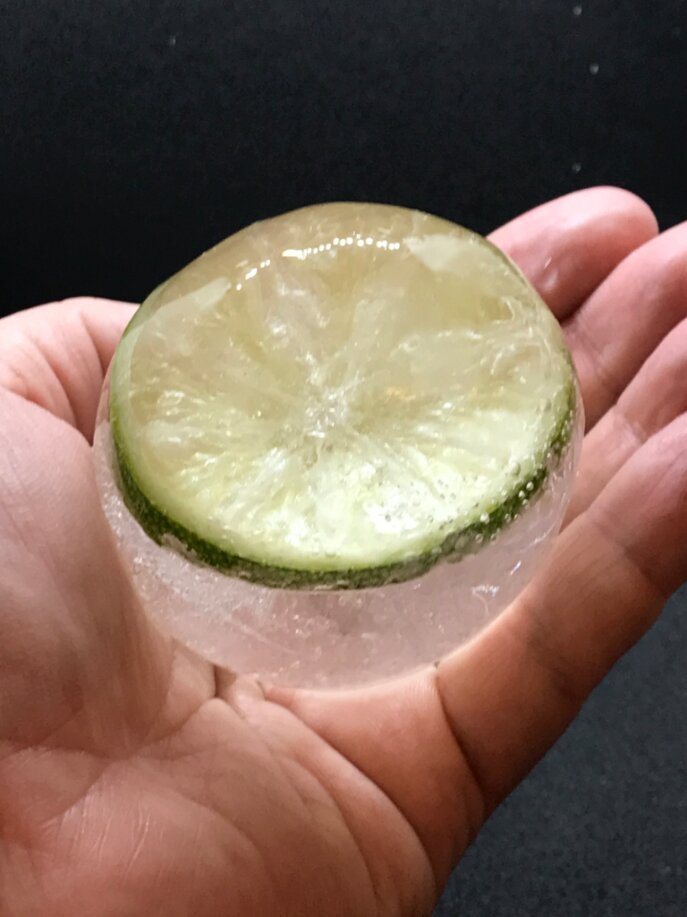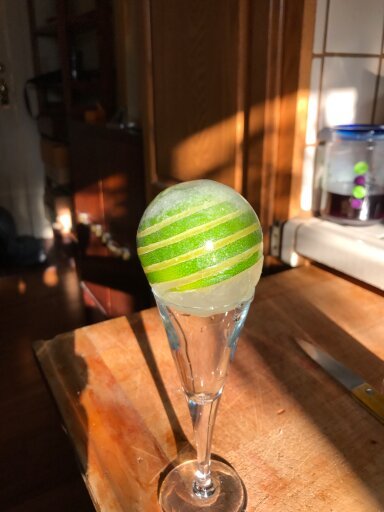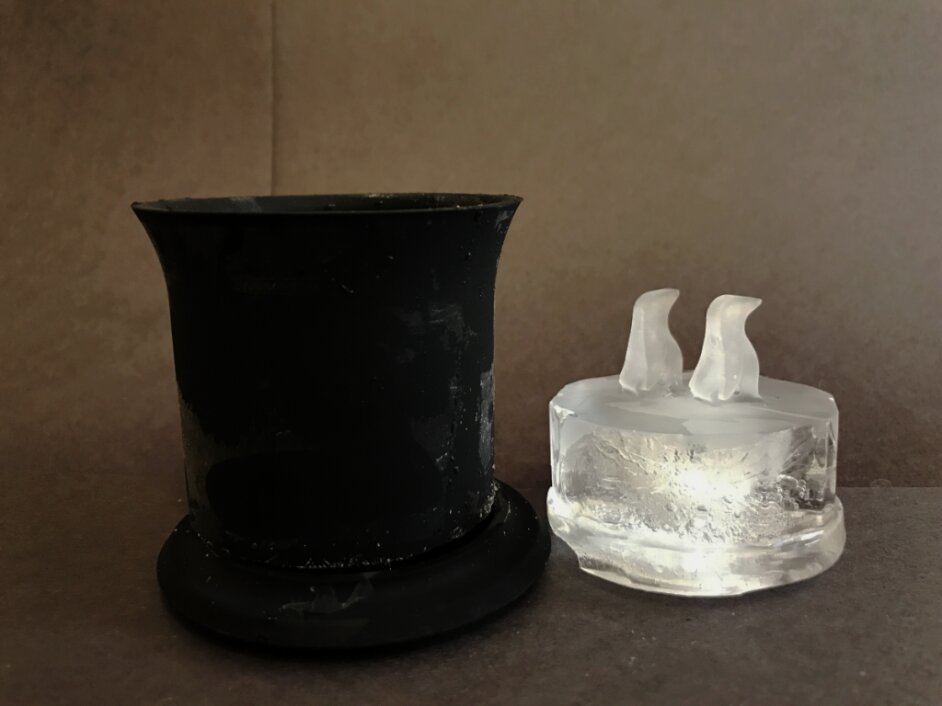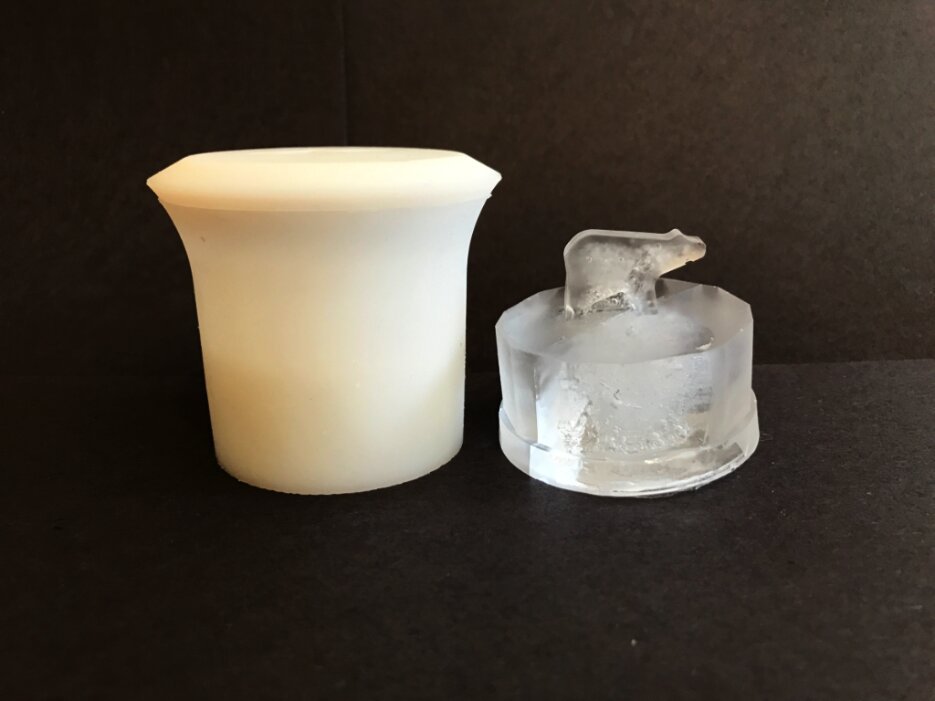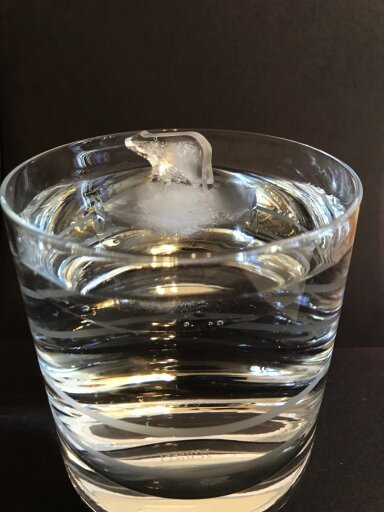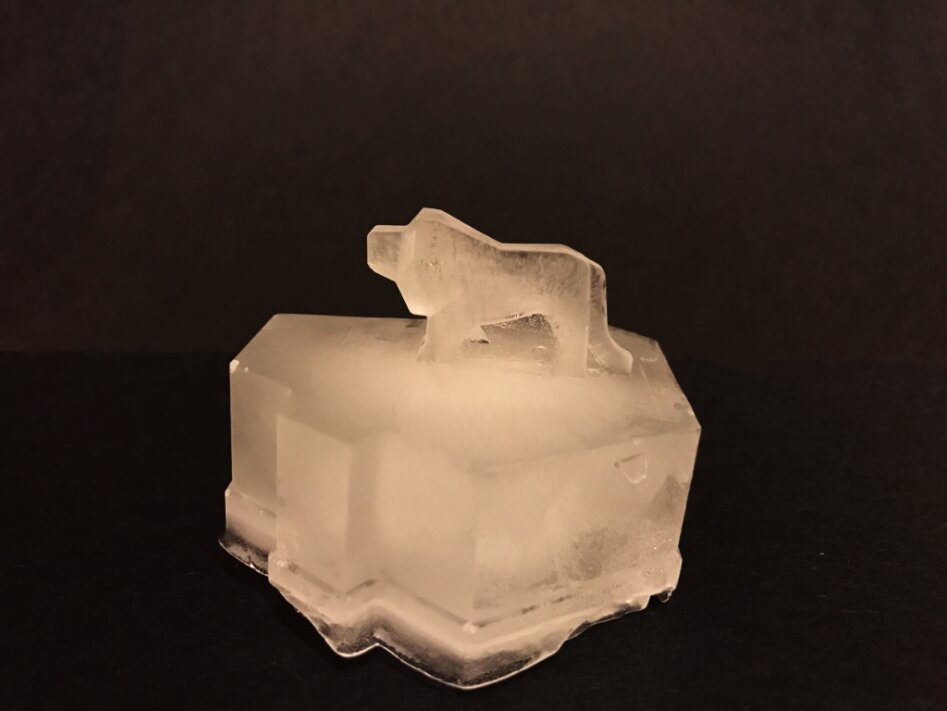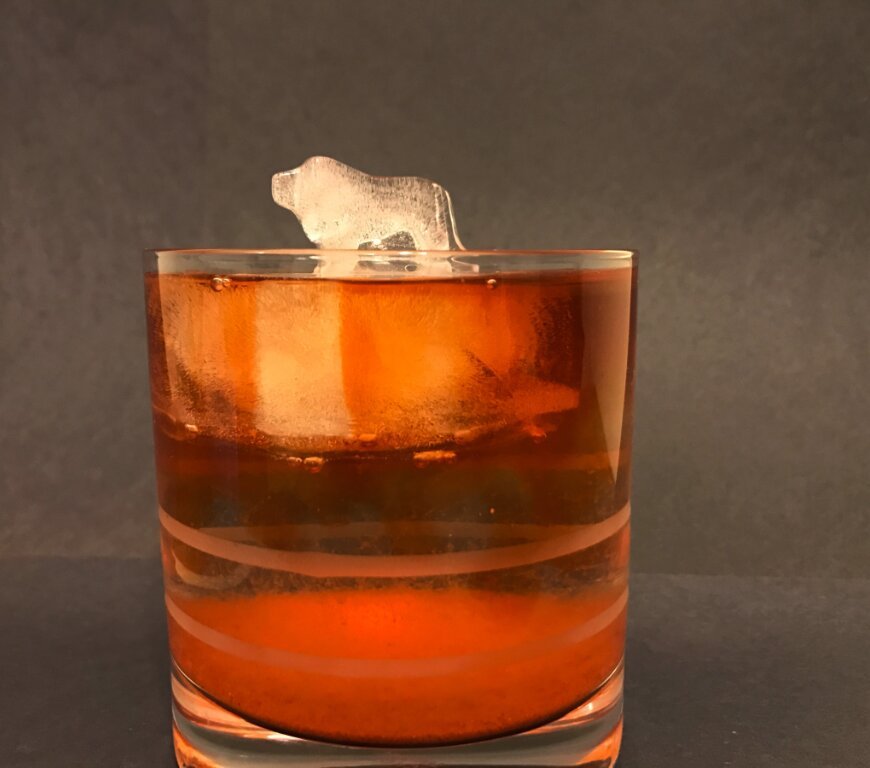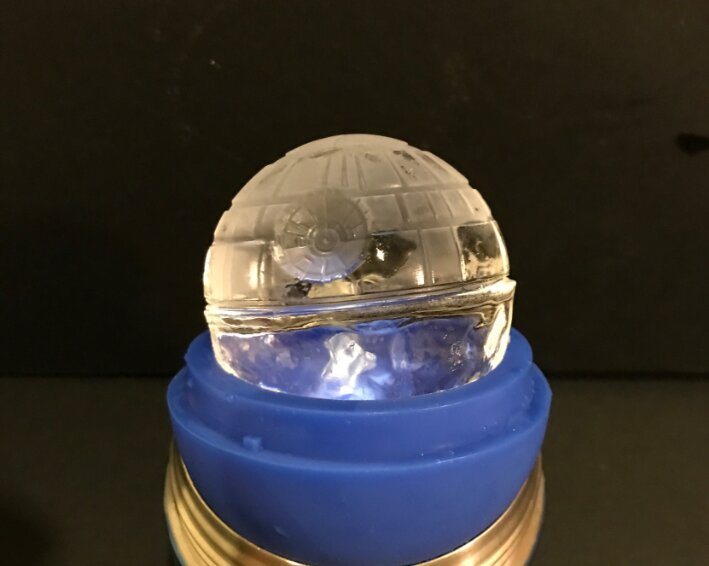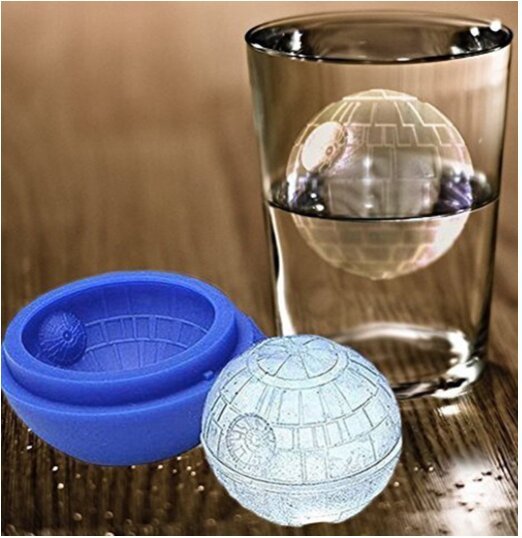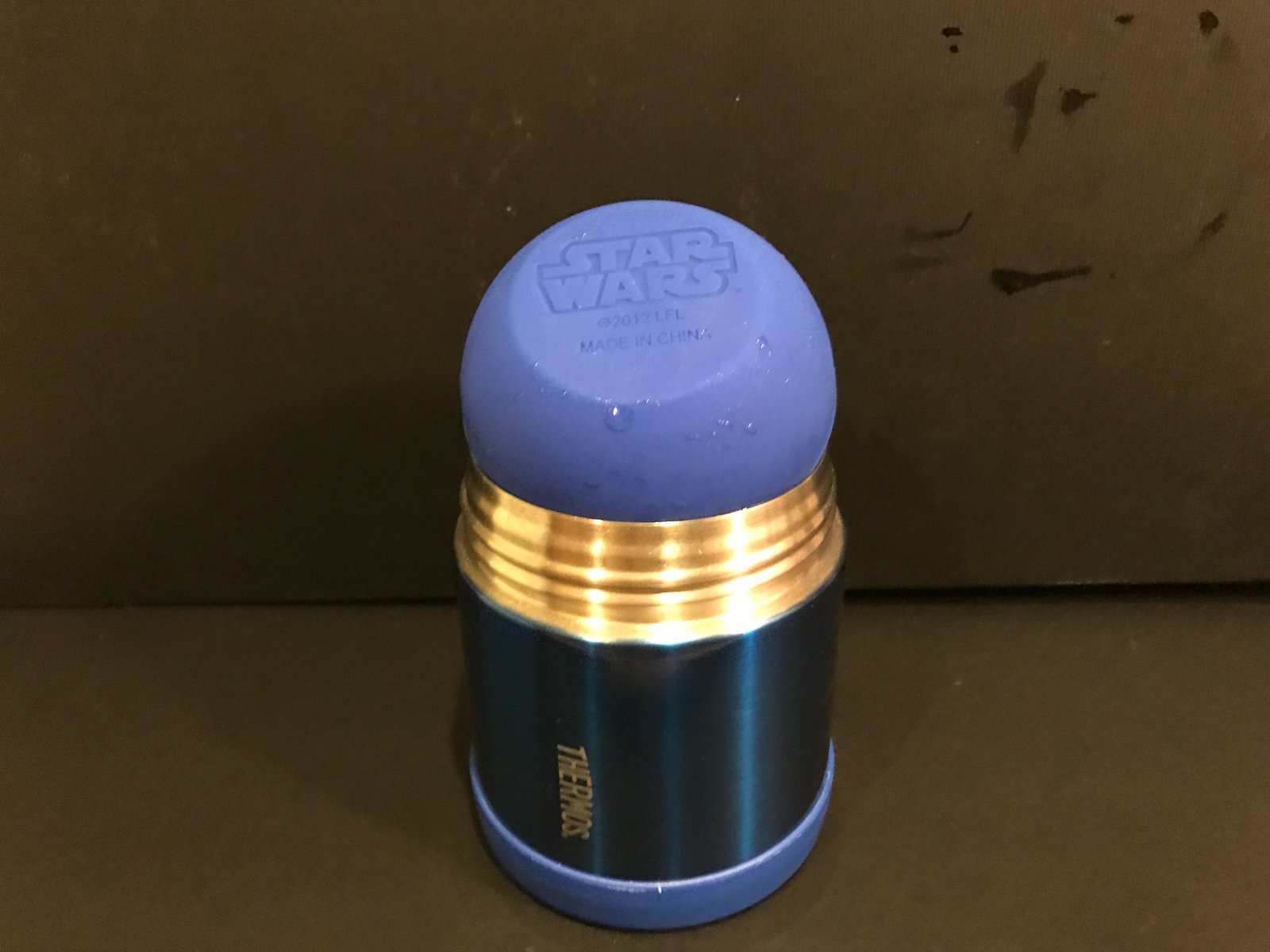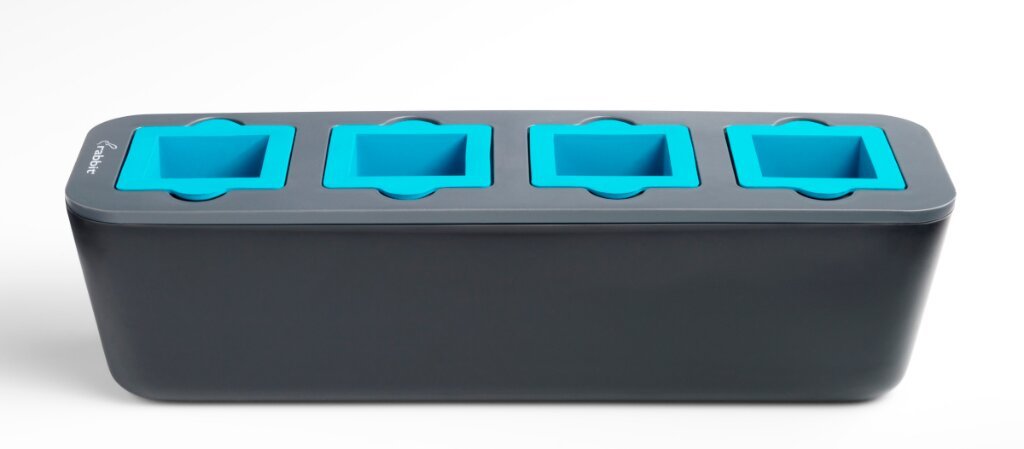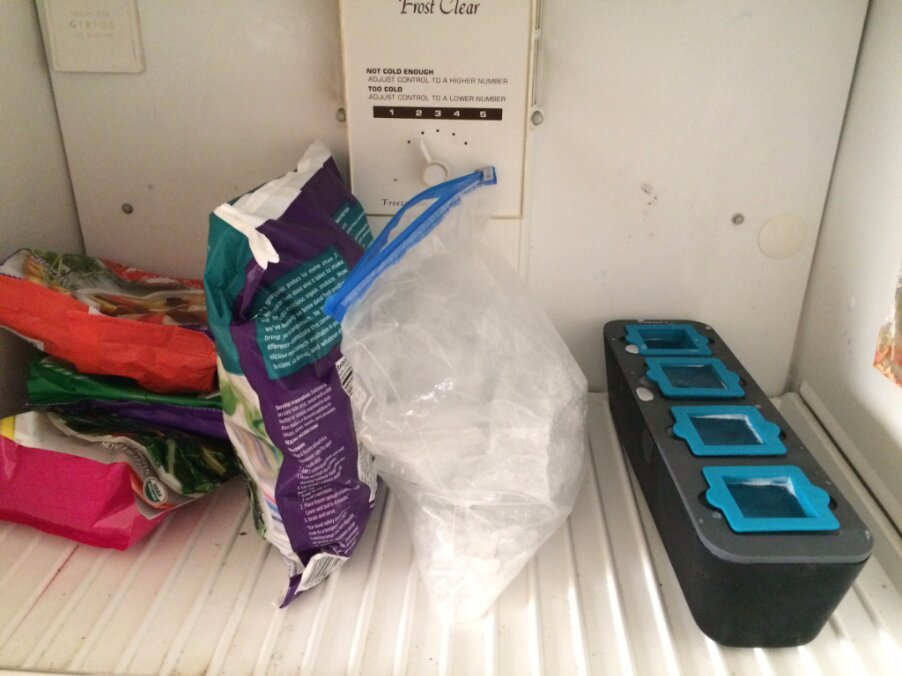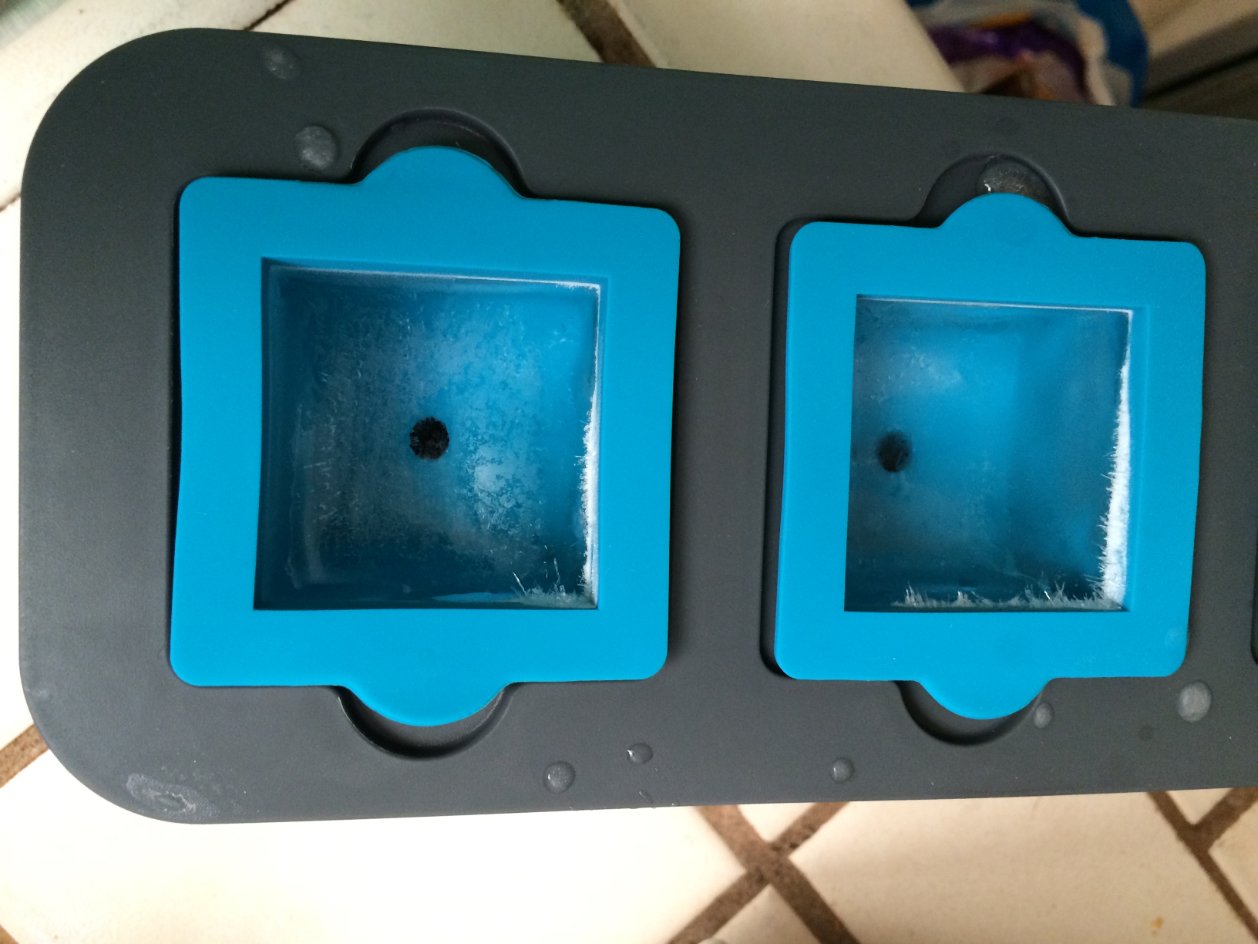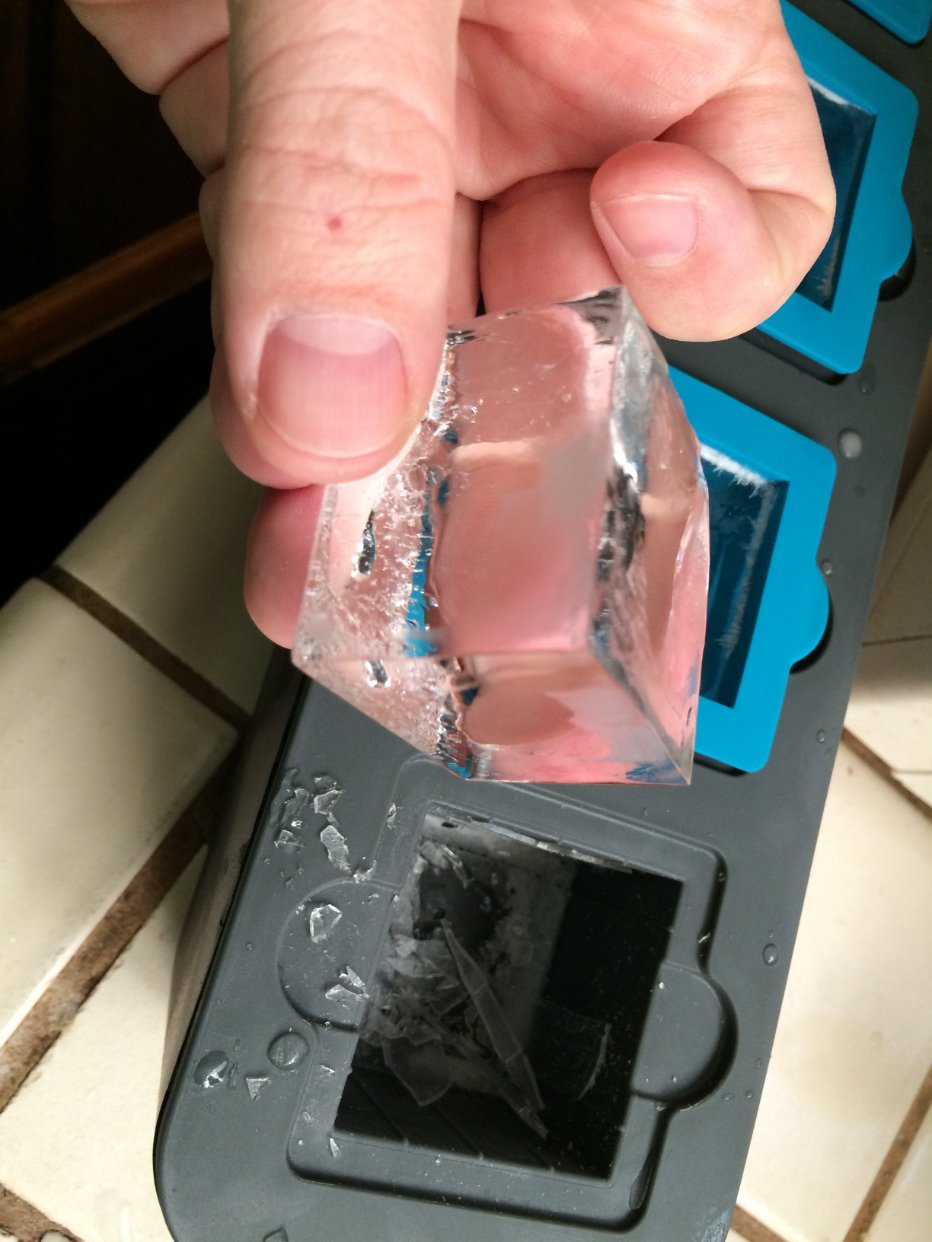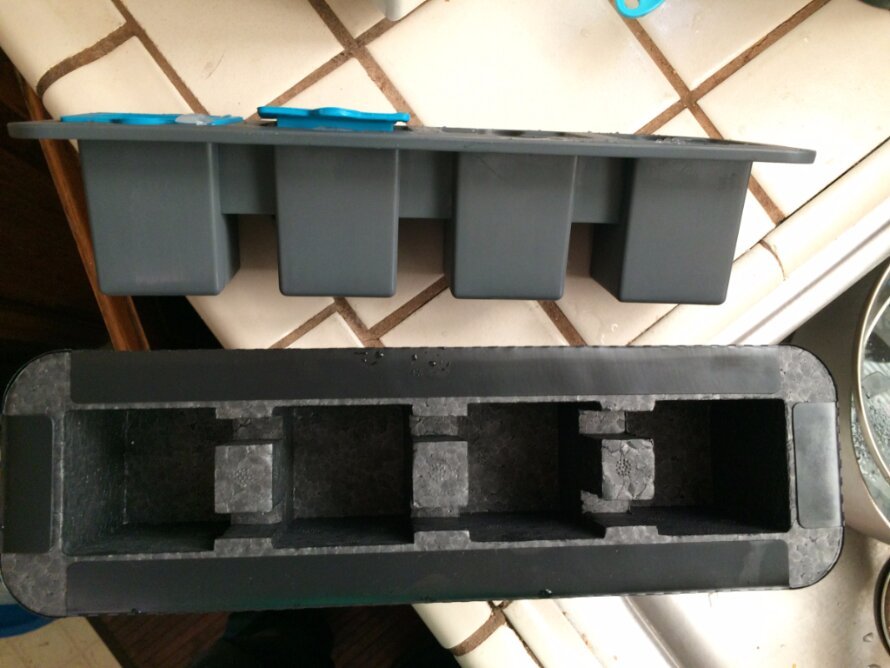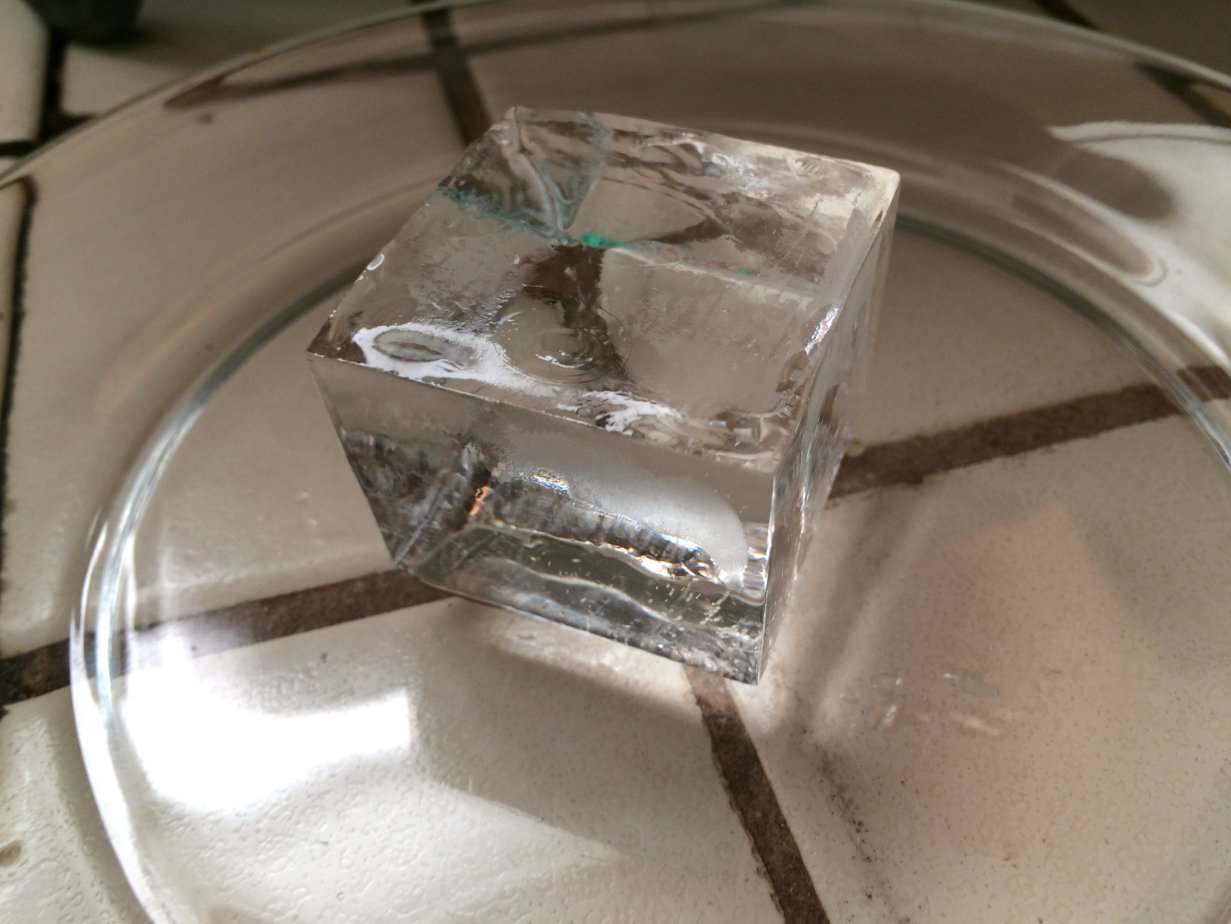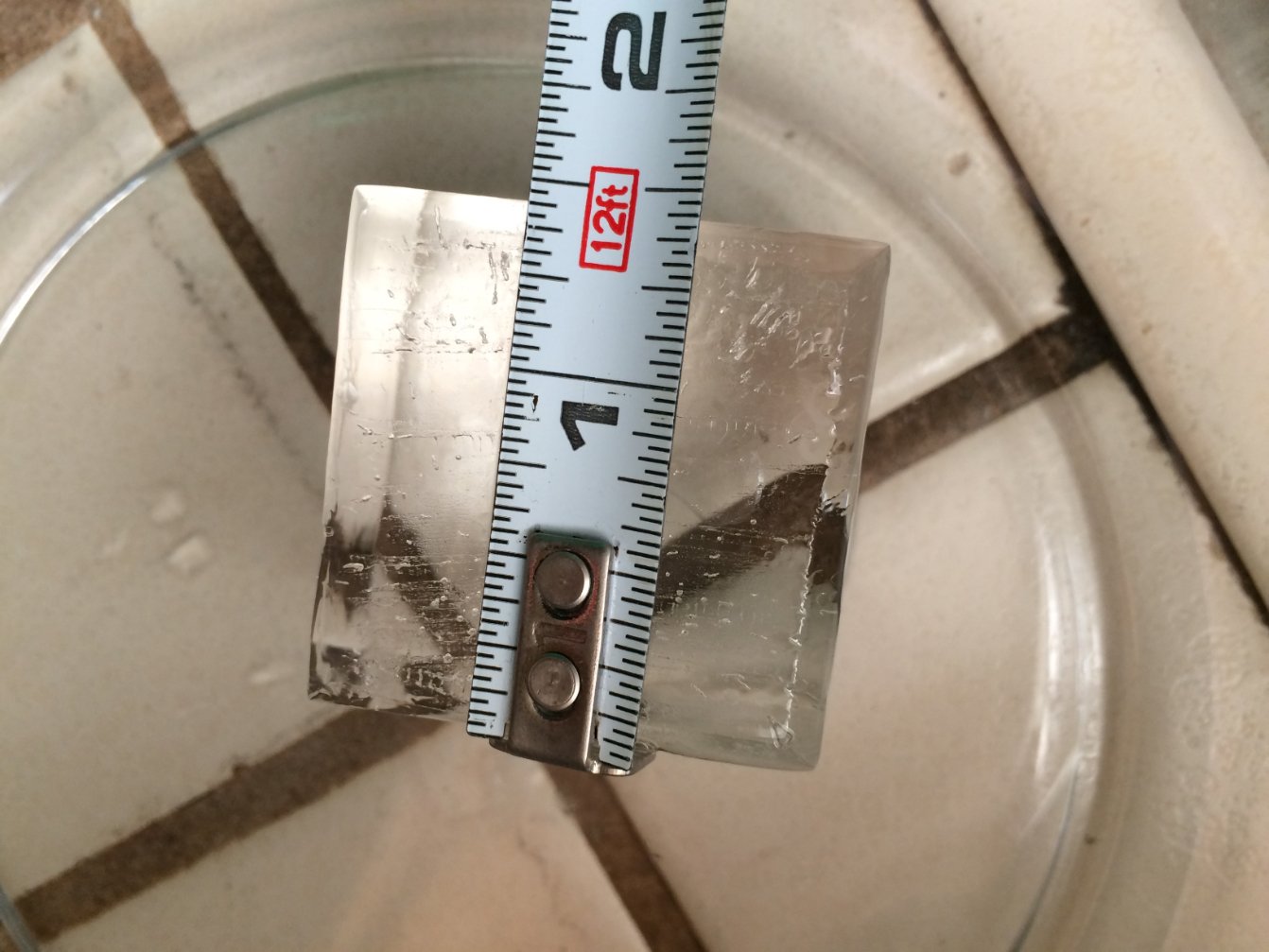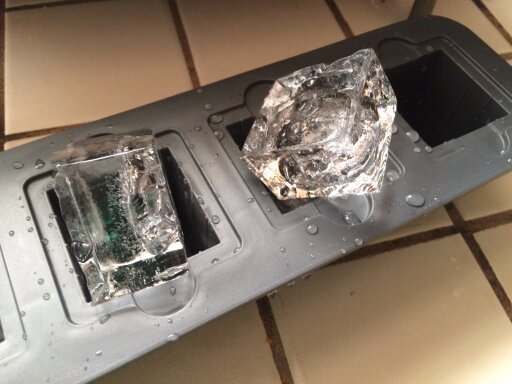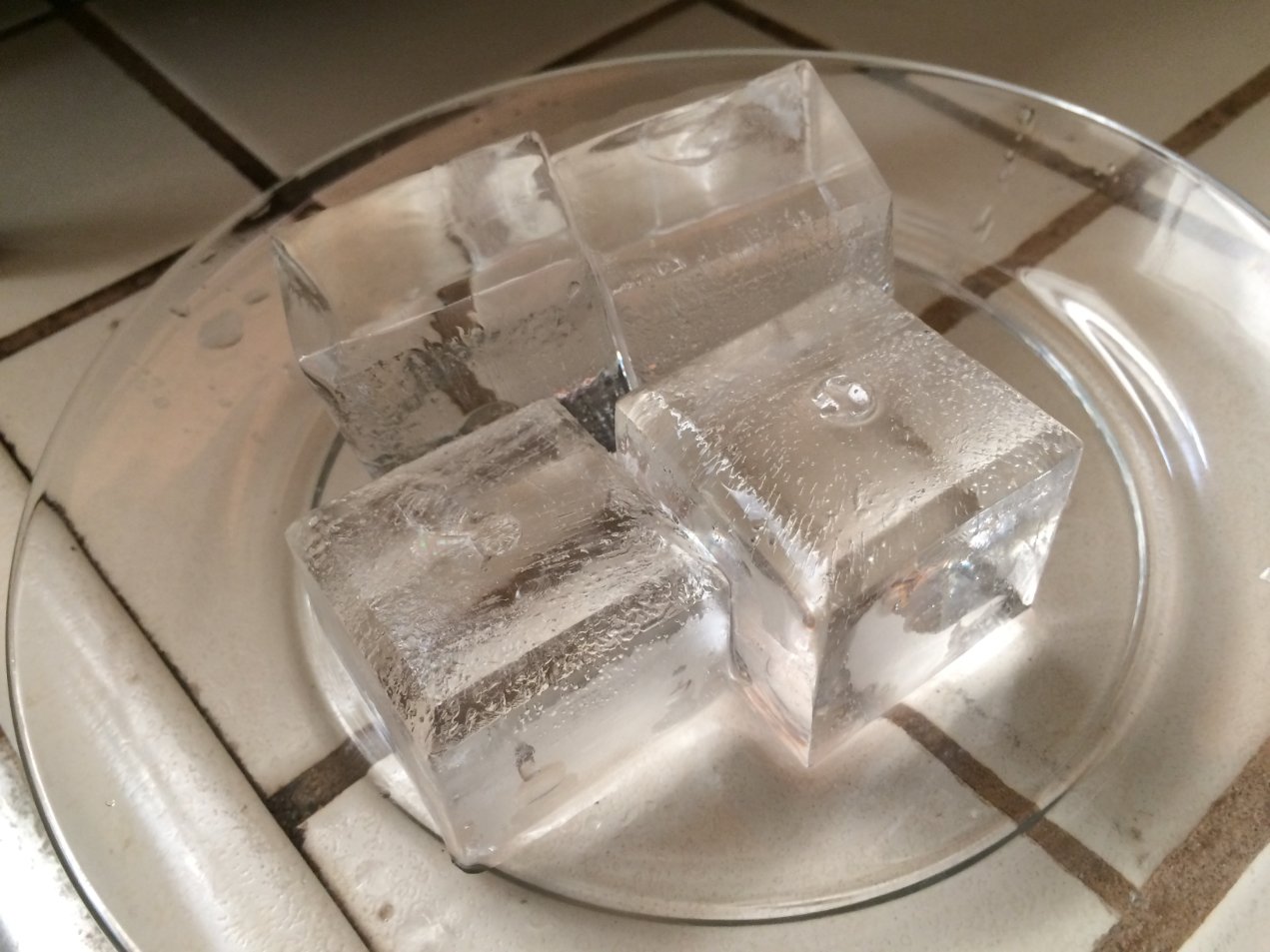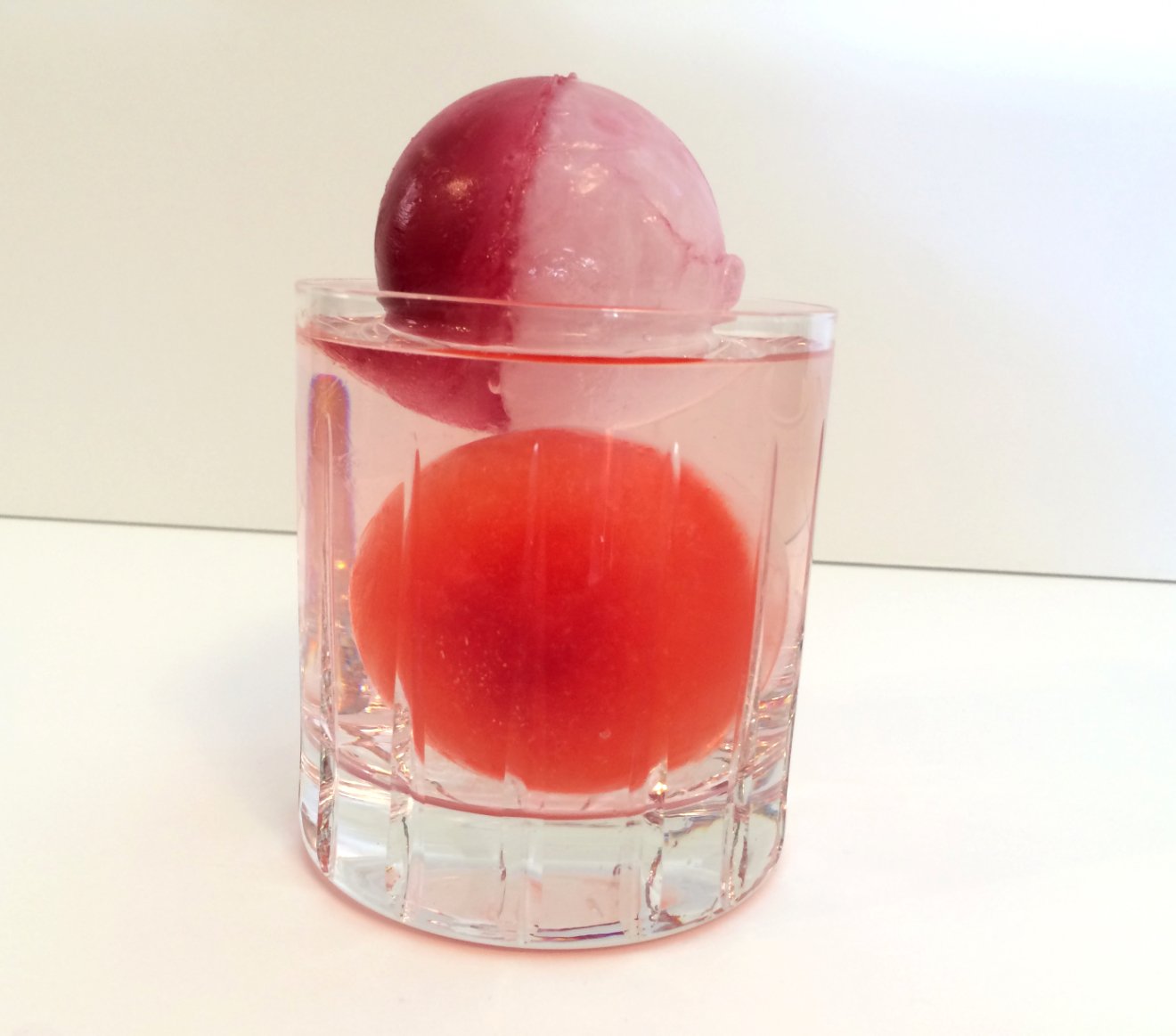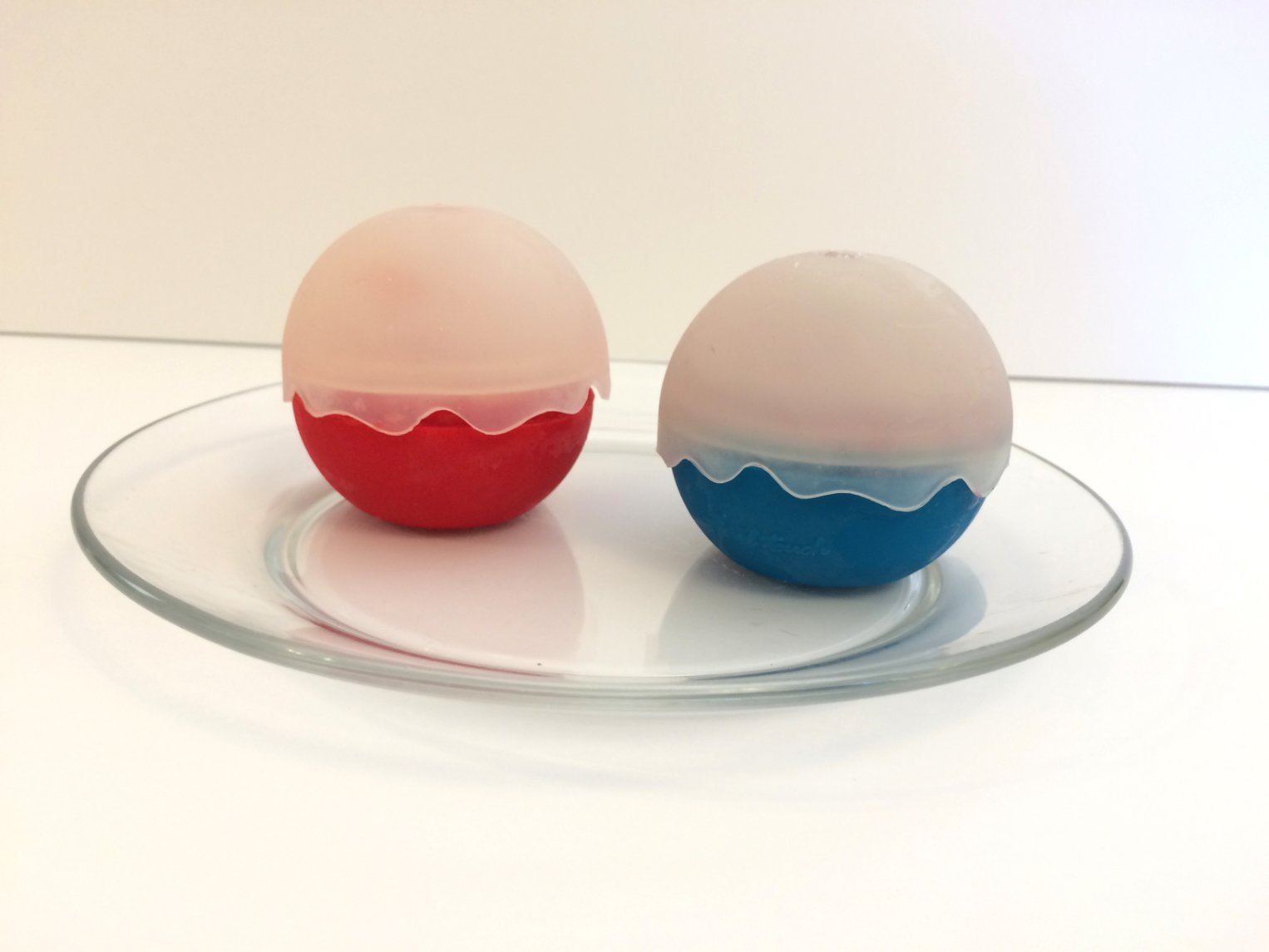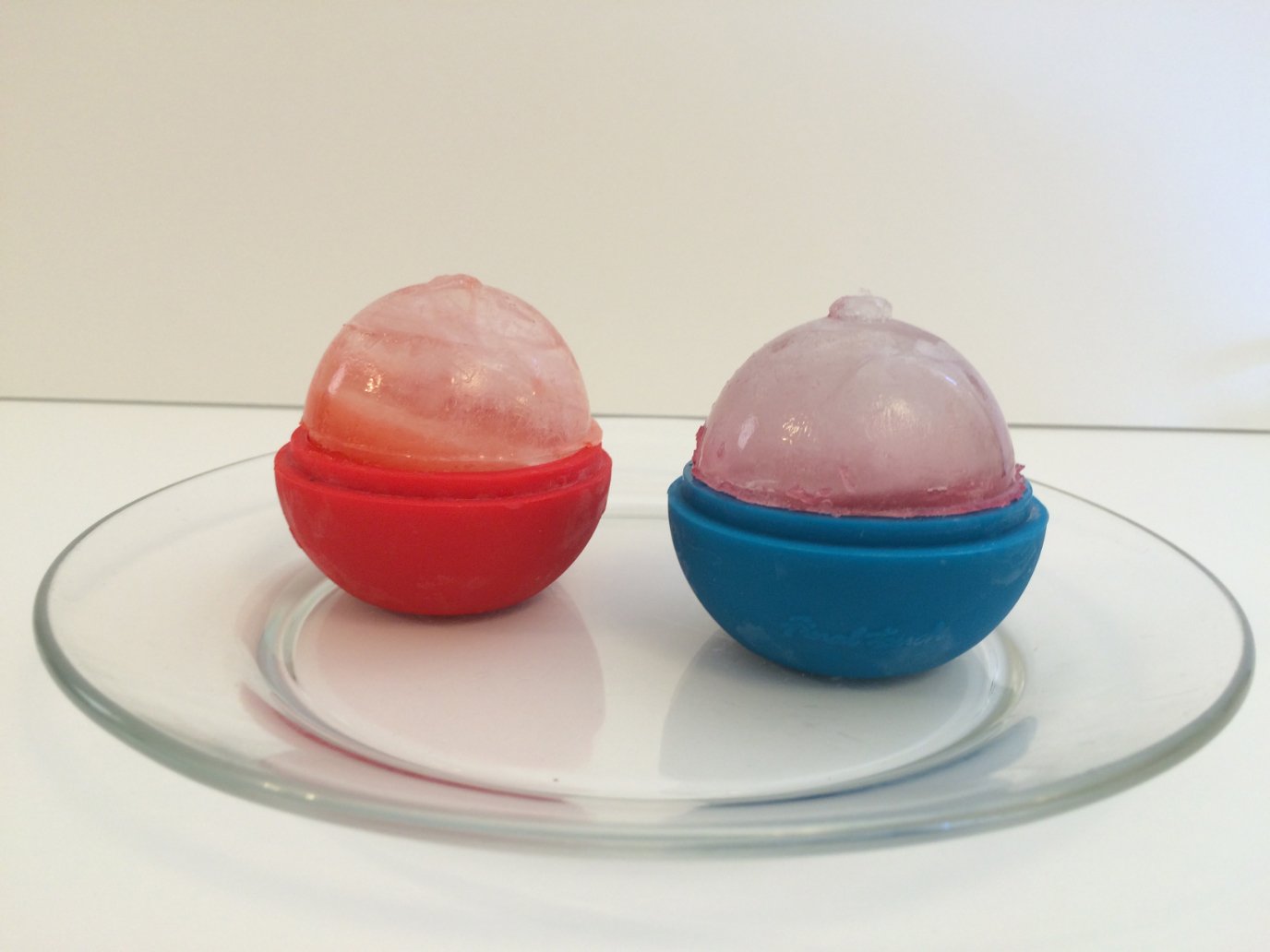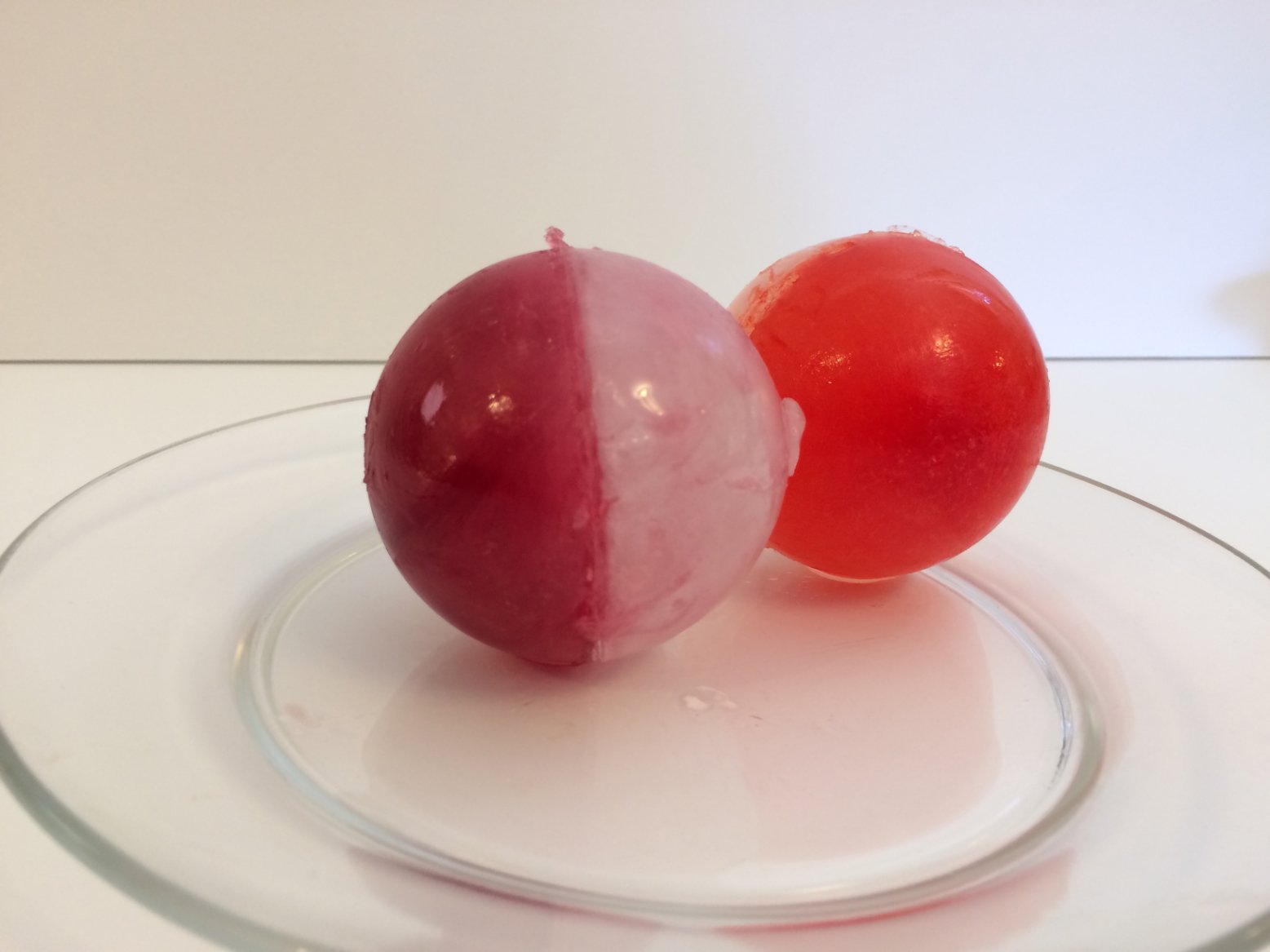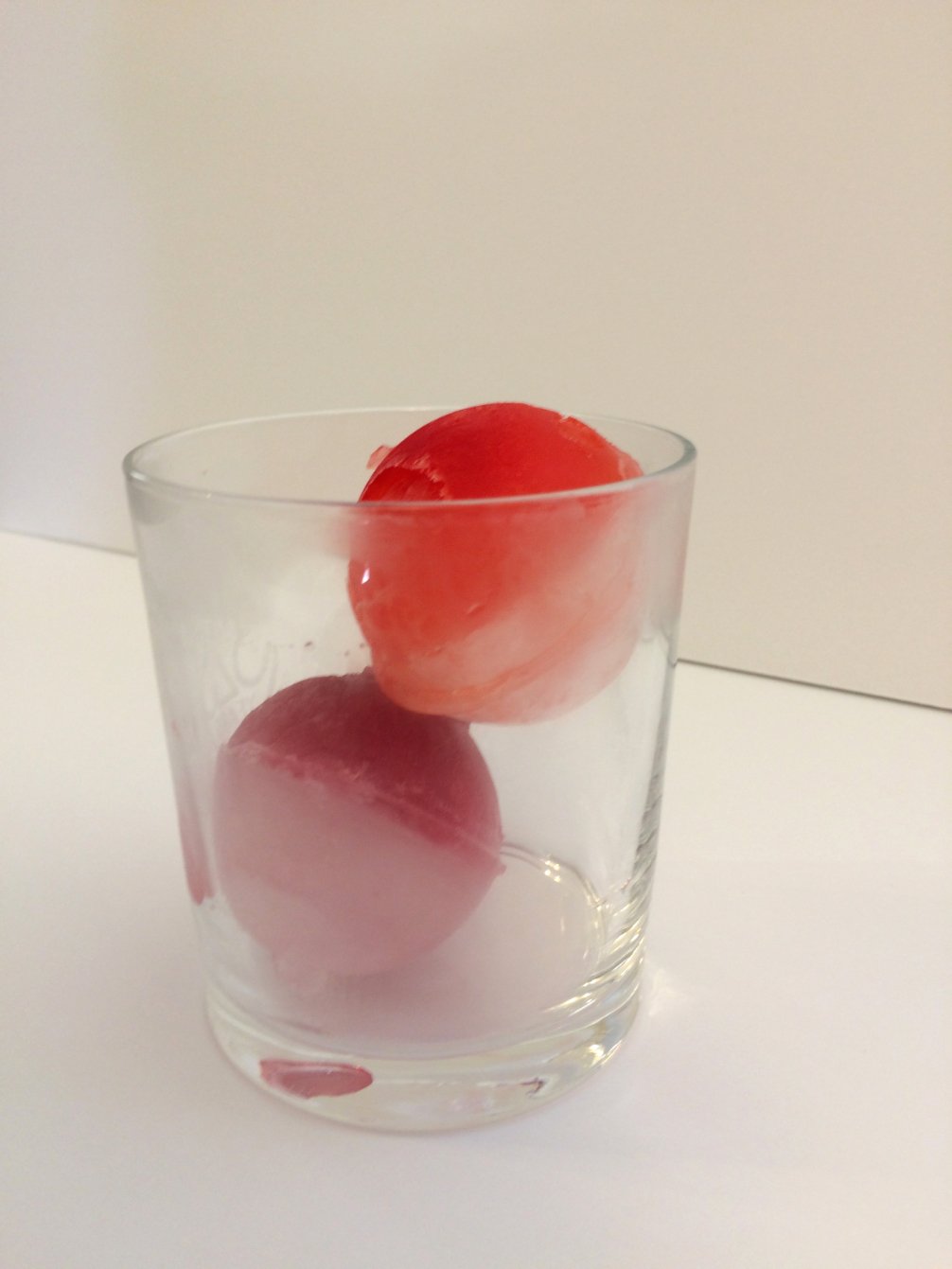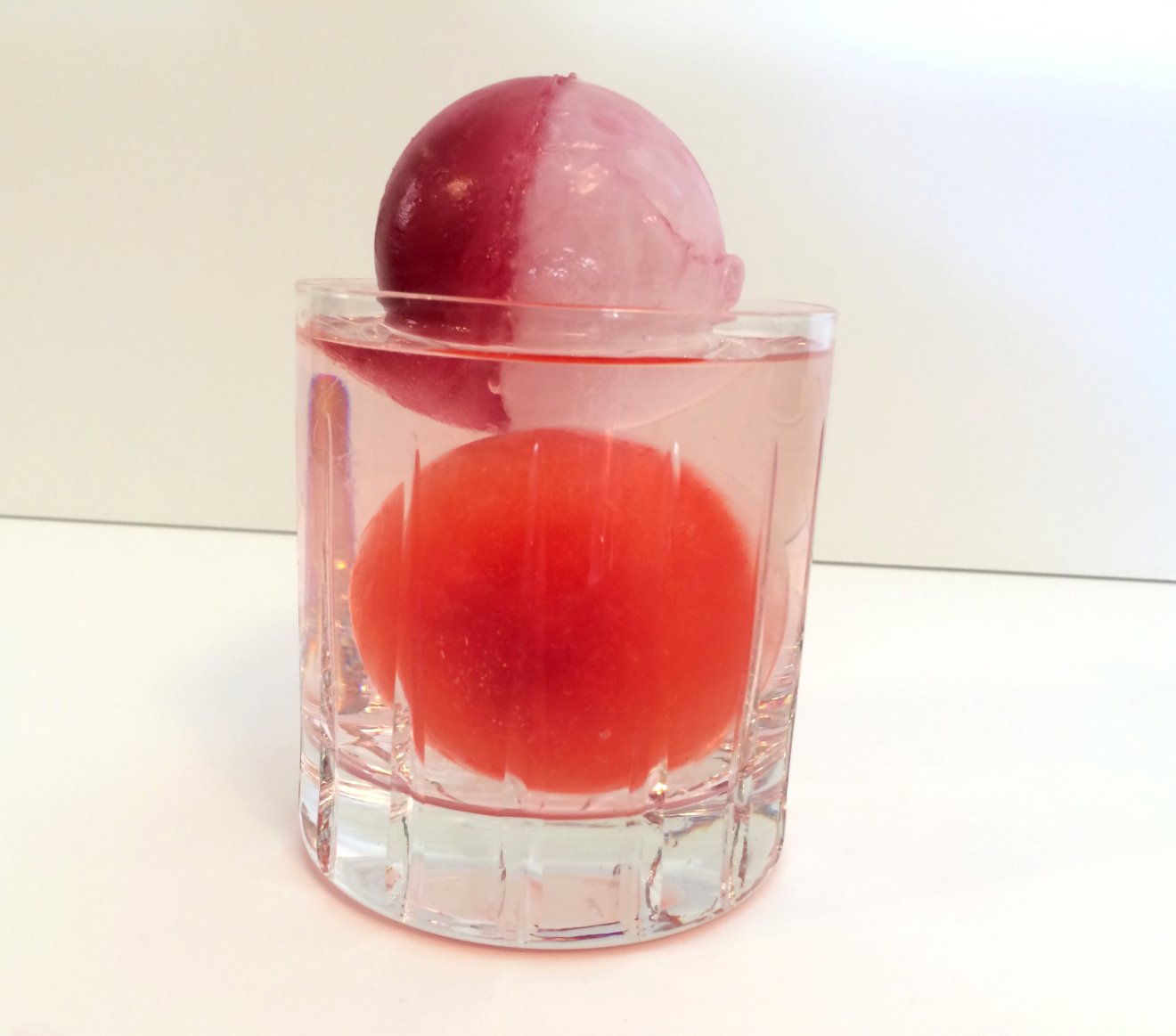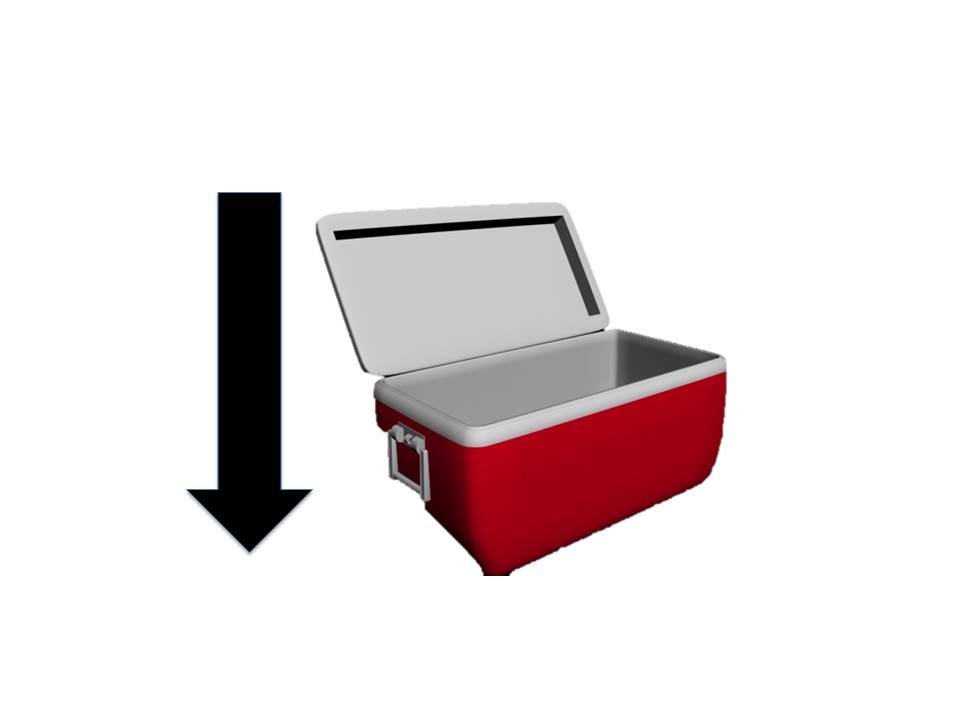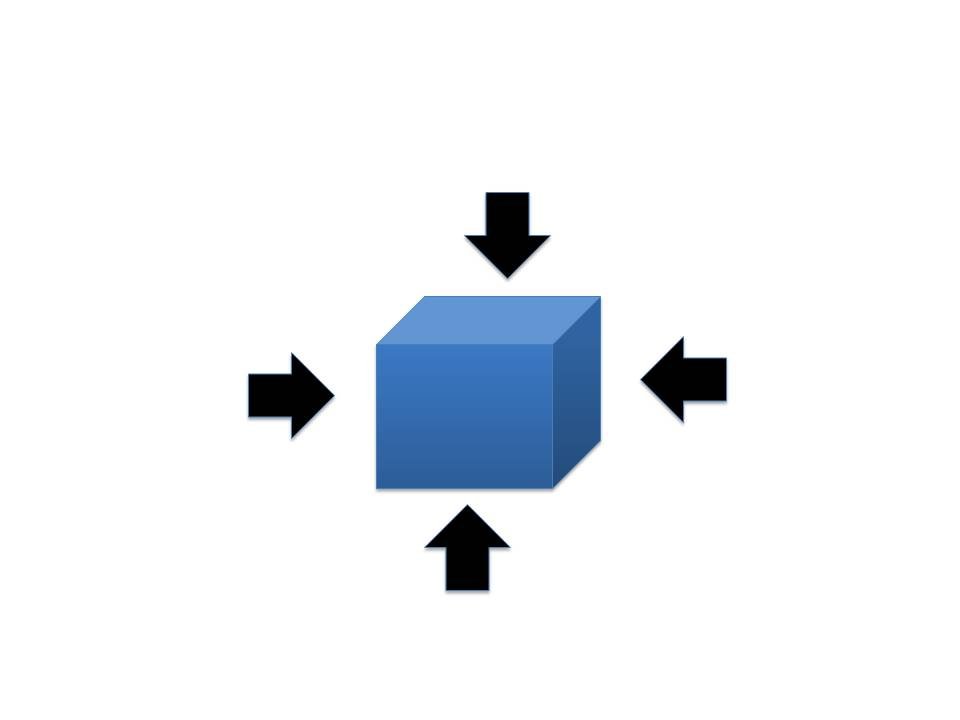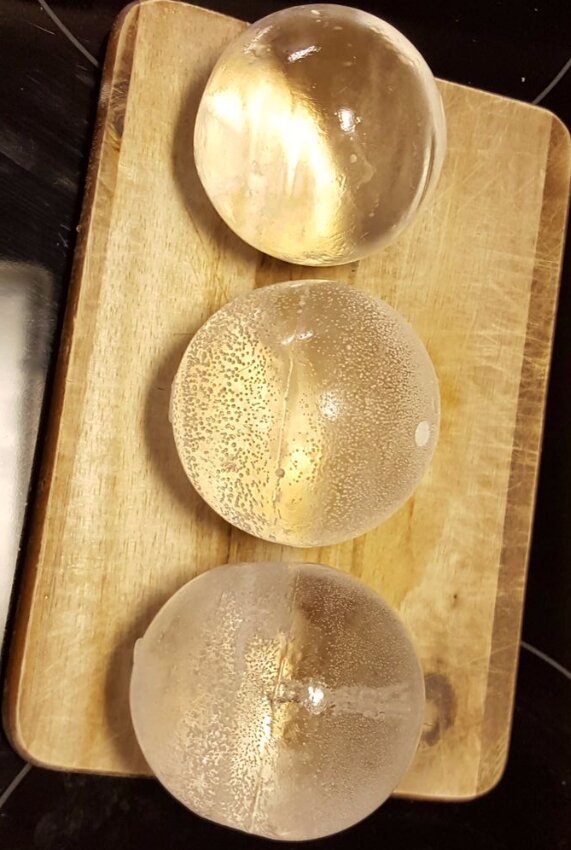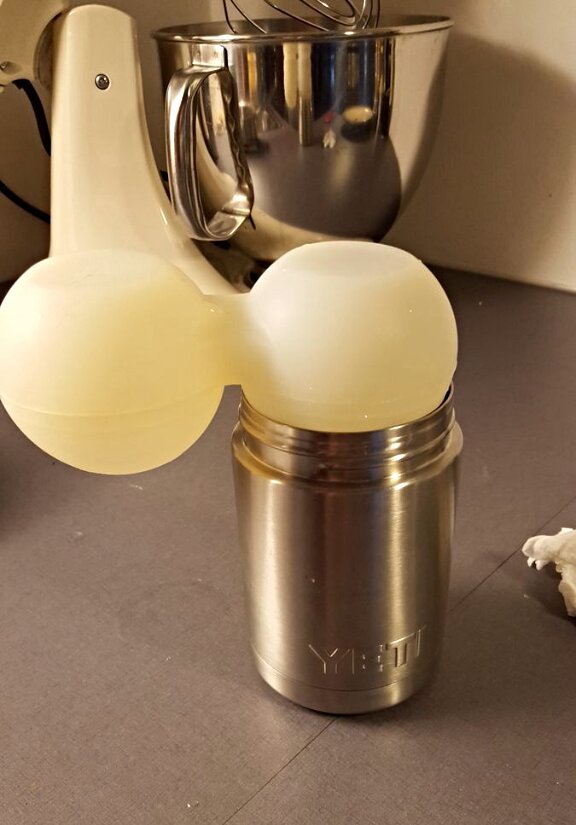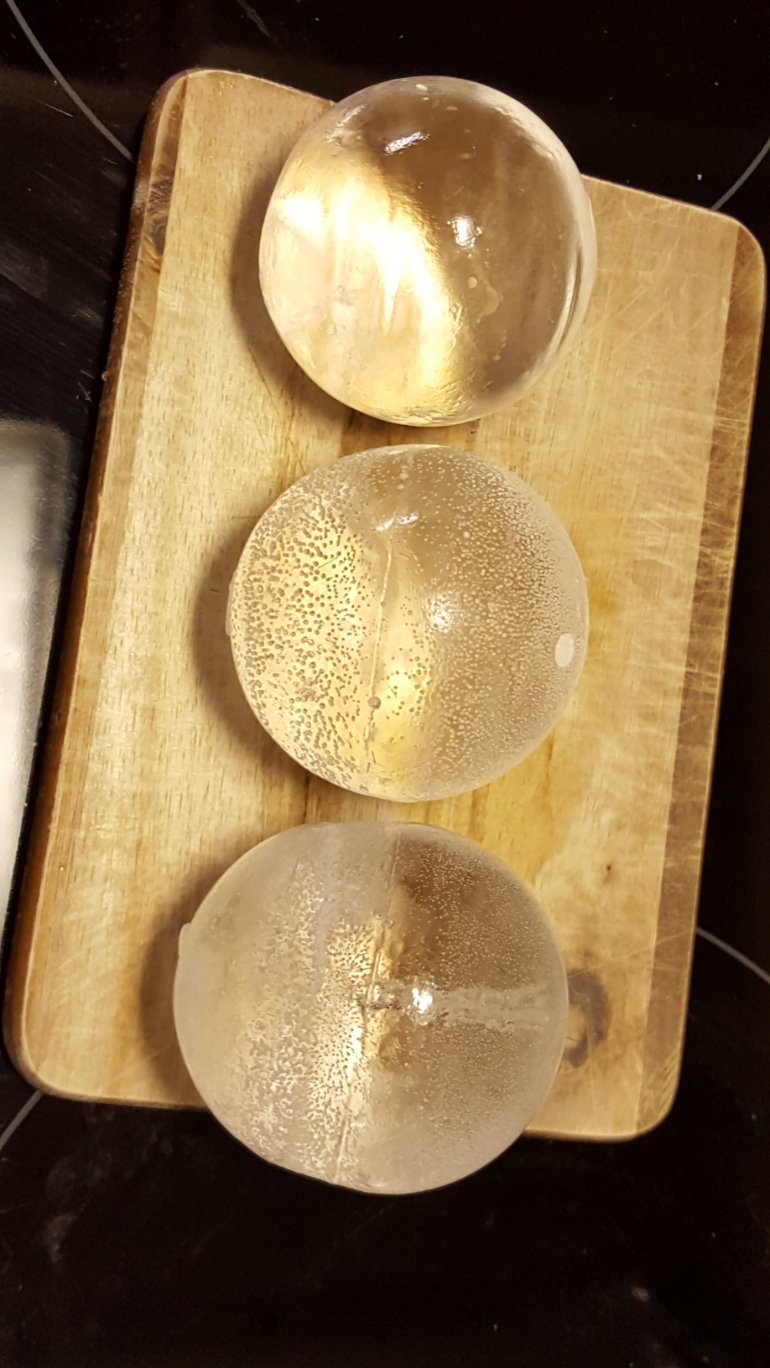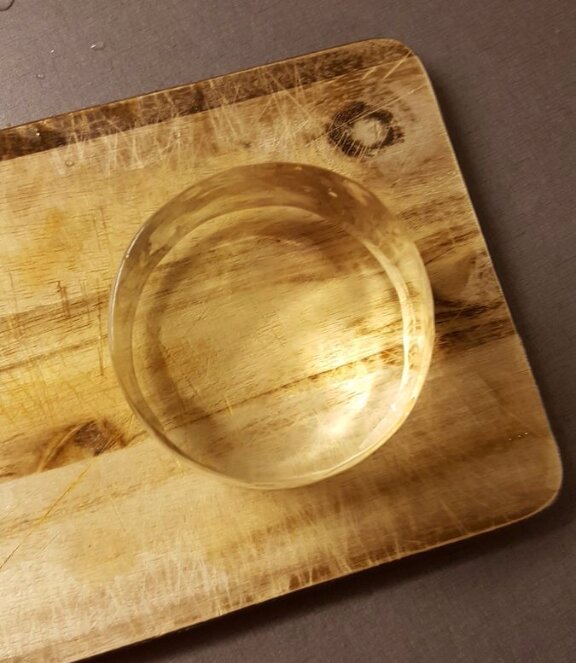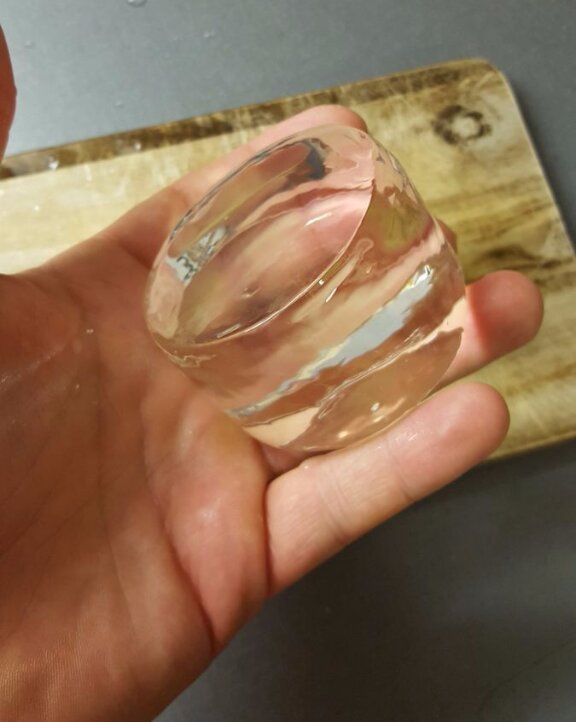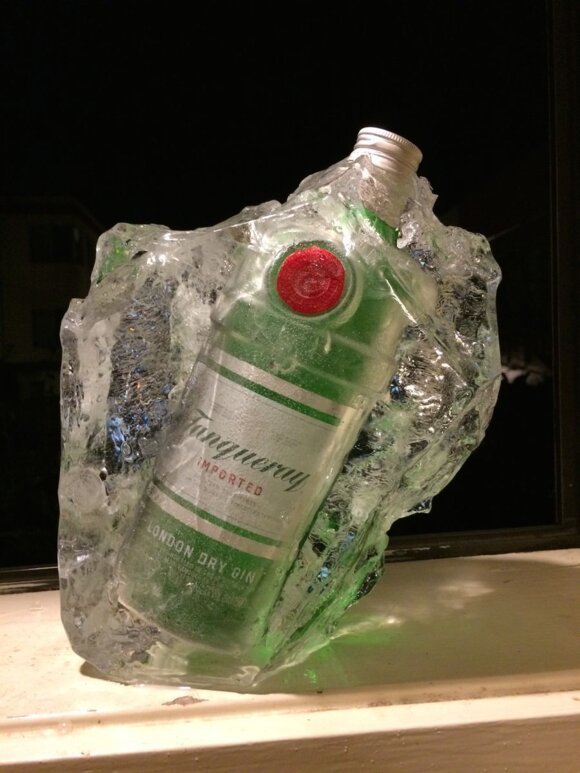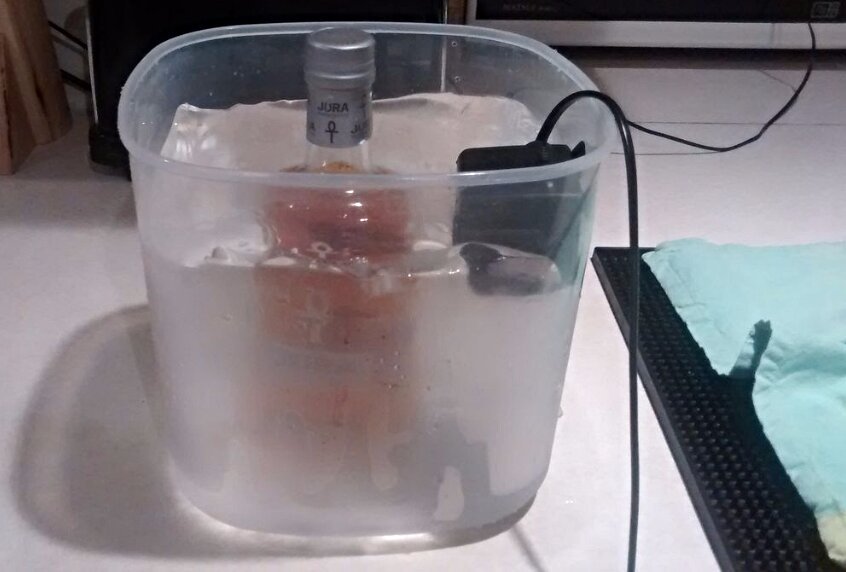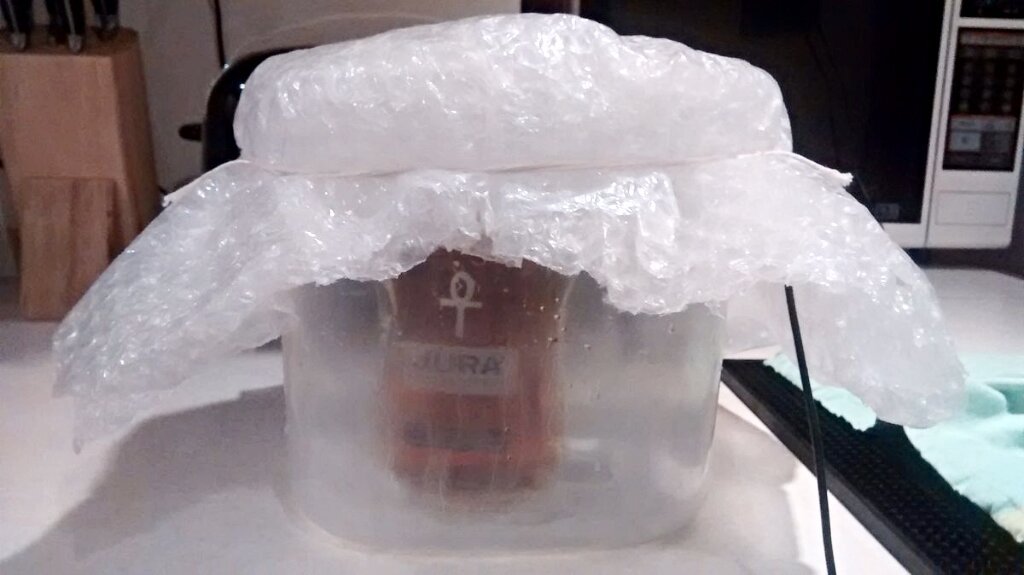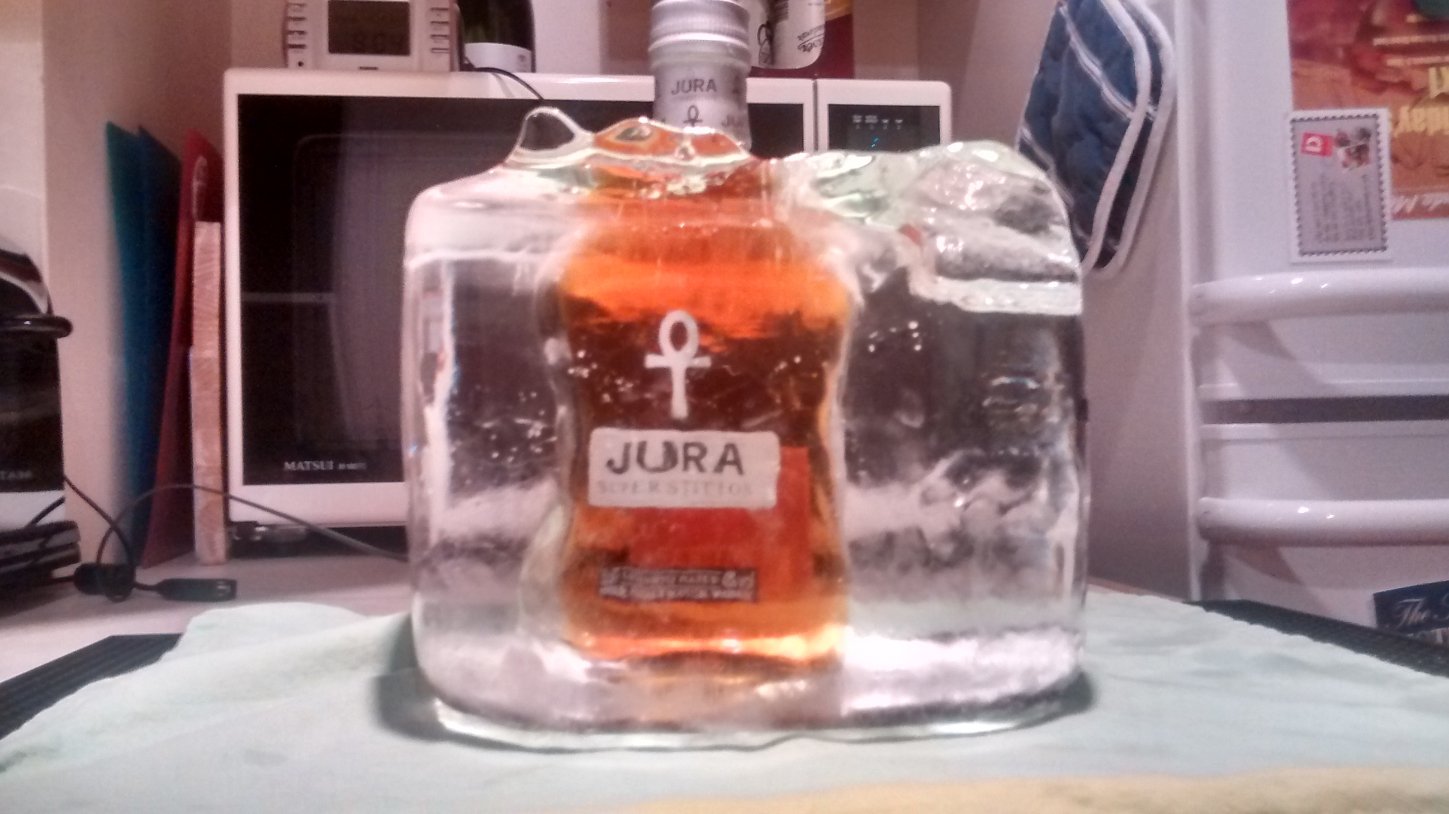San Francisco restaurant The Perennial has a cocktail program in which none of the drinks on the menu are either shaken or stirred. What's up with that?
The program, lead by Jennifer Colliau (also of The Interval and Small Hand Foods) focusses on reducing waste with a big emphasis on water waste.
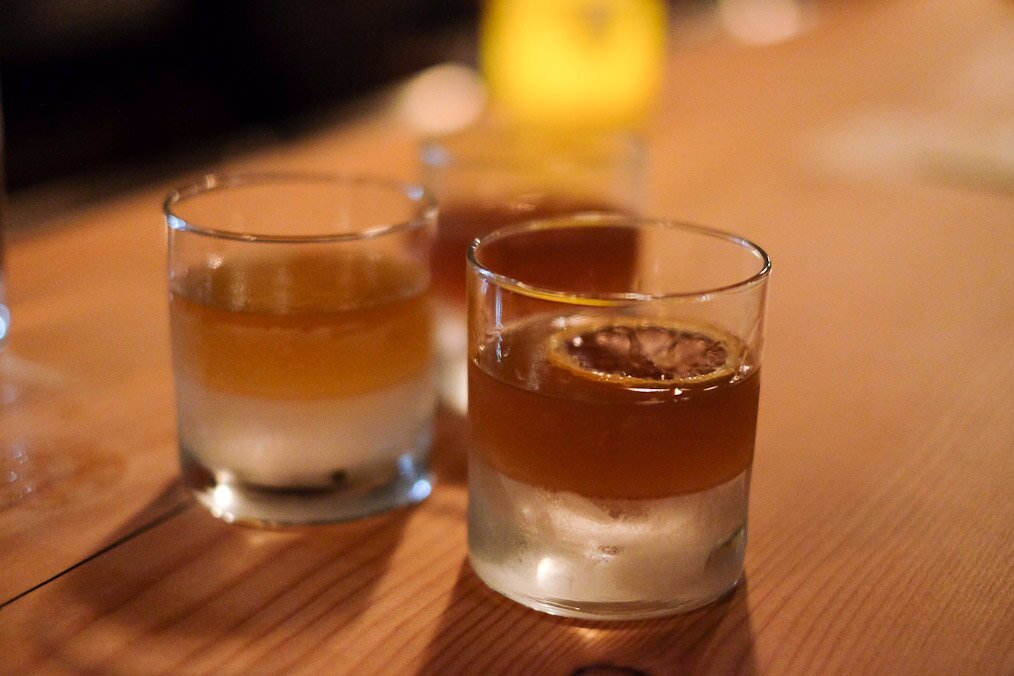
Ice frozen into bottom of glasses. Photo by
Jason Rowan.
Ice Machine Waste
According to Colliau, both Kold Draft and Hoshizaki ice machines (which produce the large clear cubes in most better bars in the US) waste 50% of the water that goes into them. The way these machines make their ice is that water runs over or is sprayed over a cold plate; and apparently the run-off is simply sent down the drain.
The Scotsman pellet ice machine, on the other hand, she says is 95% efficient. Thus the desire was to not use the water-wasteful machines in the program. They use only the Scotsman machine, but they don't use it for everything.
A second point of water waste: The average shaken or stirred cocktail is assembled in a mixing glass or cocktail shaker, shaken or stirred, and then strained and poured onto new ice in the serving glass – and the shaking/stirring glass ice is dumped out (using nearly twice the amount of water). Then the cocktail shaker/mixing glass must also be washed/rinsed out. Colliau sought to eliminate this waste.
Reducing Ice Use
For stirred cocktails on the menu at The Perennial, the drinks a batched in advance and are served in glasses in which a specific amount of water has been frozen to the bottom (glasses are kept in the freezer obviously). Stirred drinks on the menu are also pre-diluted so they don't need to be stirred but rather just poured. The liquids are kept refrigerated until service, then simply poured into the ice-containing glasses. I asked Colliau how she developed the system. She said:
I originally stirred these drinks to various temperatures, depending on their alcohol content, until they tasted the best. I measured the drink going in to the beaker then out to see how much dilution resulted from the ice melt. Then, because all of our freezers are the same, I took that dilution proportion and held the resulting drink in the freezer to make sure it tasted great even at that colder temperature.
Served in rocks glasses with ice frozen into them, approximately every 5 minutes the drink gets about 5 degrees warmer until it hits around 35F. It's important that the drink taste delicious over time.
Ideally we would White Lyan-style this execution and have different freezer temps for different drinks, but we use these freezers to chill glassware and keep sherbet and large ice in them, so we hold them all cold and manipulate the dilutions to work for each drink.
For shaken cocktails, things are even more complicated – the act of shaking is to roughly mix and emulsify ingredients together. To accomplish this, they use 1/3 cup of Scotsman ice, and run the cocktail through a blender in a small mason jar until there is no ice left. Thus the drink is "shaken" and no ice is dumped out at the end. Colliau says she'd definitely prefer a less noisy option, but it's the best they can do so far.
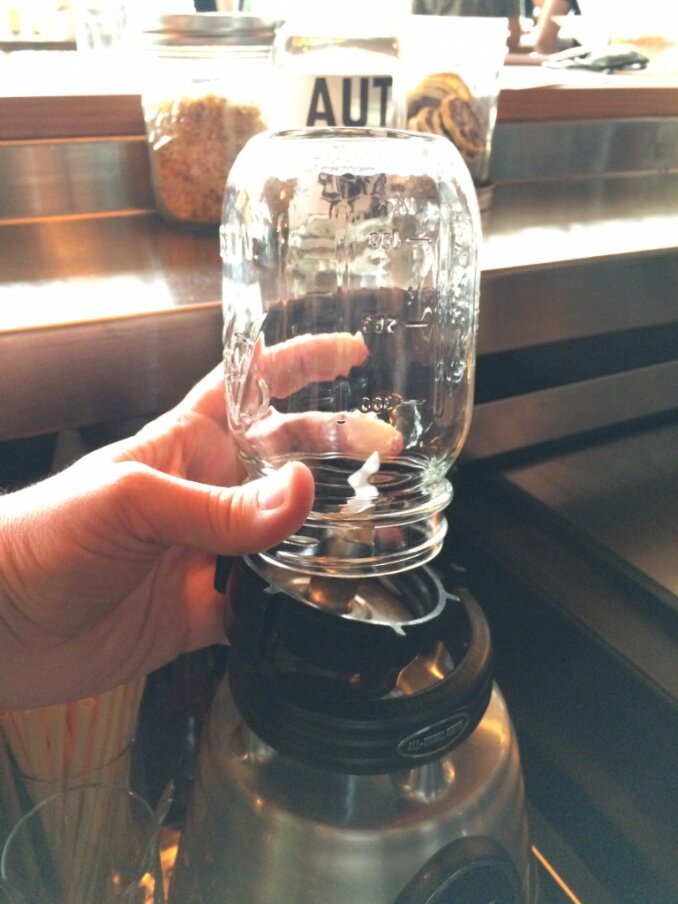
Mason jar mouths fit blender blades. "Shaken" cocktails are blended until the ice is all gone.
For off-menu cocktails, they have cubes from 2" Tovolo ice cube trays that they can use for rocks or cracked for stirring.
Stirring to Temperature
For off-menu drinks that are not pre-diluted, they stir drinks to temperature; as temperature directly relates to dilution.
The idea is that because ice kept in the well is basically at 32 degrees (F), all dilution of the drink will result in known temperature reductions (and vice versa). Thus to serve a drink the bartender can put in some cracked ice in the glass, stir a bit, prepare other more complicated drinks while it is diluting/melting, then check the temperature and stir more/add more ice if needed, until it reaches the desired final temperature. Any extra ice will be dumped.
Colliau notes, "Cobbled ice has so much surface area that it over-dilutes too quickly to stop when the drink is ready to go."
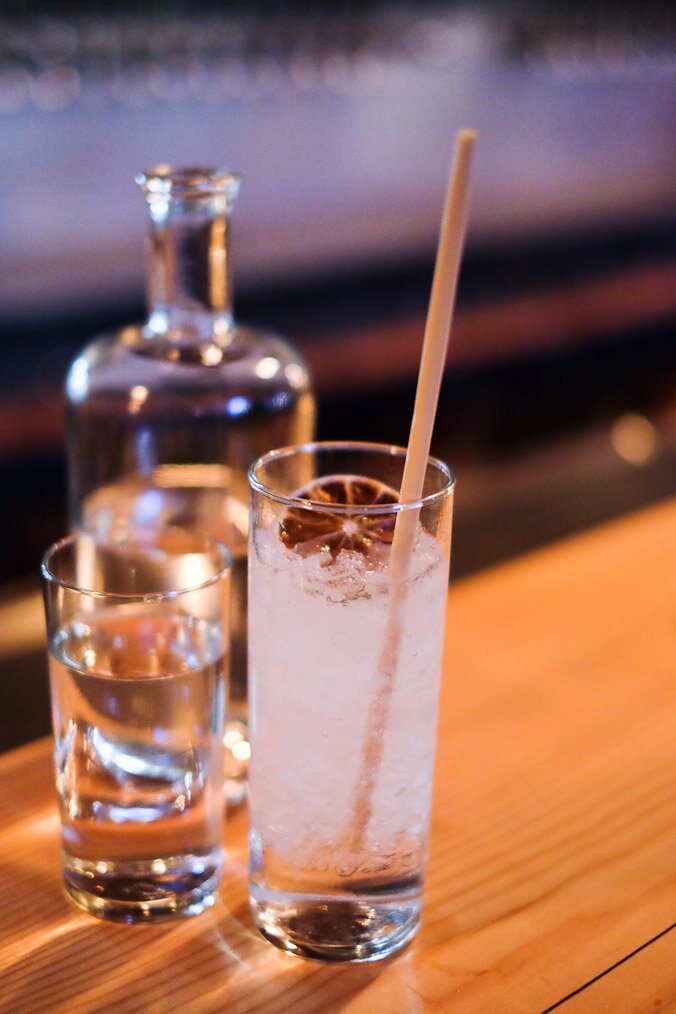
Tall drink served on pellet ice with straw straw and dehydrated citrus wheel. Photo by
Jason Rowan.
Temperature of Stirring
For low-alcohol drinks and those served on glasses with ice frozen into the bottom, they stir to 35 degrees. For regular stirred drinks like a Manhattan or Martini, they stir to 32 degrees as there will be no additional dilution from ice in the glass. And for the Gimlet at The Interval, they stir down to 25 degrees because the drink uses high-proof gin and additional dilution is needed.
Colliau says, "These are temps that I like for certain drinks, and they are guidelines rather than hard rules. Above all the drinks should be delicious! Using temps makes consistent execution across staff much, much easier."
Other Eco Savings
- For straw tasting of cocktails, not only do they not use plastic straws (actual ones made of straw are give to customers), they use a system of a spoon and metal straw – you dip the straw into the drink then empty it into a spoon that you use to taste. Thus you don't need to wash the equipment each time.
- Water un-drank from water pitchers on tables is collected, combined, and used to water the rooftop garden.
- They don't "burn" the ice wells at the end of each night: Ice in the wells is used the next day as the ice for chilling syrup and juice bottles. At the end of the week (they are closed on Sundays) they drain clean the ice wells.
- To cut down on waste of citrus, they used preserved whole limes in one drink and make whole-grapefruit marmalade for another.
- For fresh juice, they will use leftovers for one day, and then make sherbet for any leftovers at the end of the week. She notes, "Closed on Sundays, juice on Mondays, use 1-day-old juice on Tuesdays in the service well and squeeze fresh to par, keep rotating like that so ideally we use all of the day-old juice the next day, then on Saturday night we mix the lemon, lime and orange juices with milk and pineapple gum syrup and turn it into sherbet. (No grapefruit for medical contraindications.)"
- For purchasing decisions, they look at the carbon footprint of not only the actual product, but its bottling and transportation. High-proof spirits mean less water is shipped in bottles; heavier bottles mean more carbon as well. Shipping is a far less carbon-intensive mode of transport than trucking, so Colliau notes that trucking bourbon across the country from Kentucky might ultimately have a higher carbon footprint than shipping it to California from Japan, even though the distances are vastly different.
I'm sure there are tons more environment-saving considerations and processes in place – and this is just on the drink side of the program. This is definitely a more thoughtful process than pretty much every other bar attempting to reduce waste. Really, really impressive.
 Homework: Colliau says she got a lot of information about carbon footprint of transporting bottles and other ingredients from the book How Bad Are Bananas? I'm planning to read it one of these days.
Homework: Colliau says she got a lot of information about carbon footprint of transporting bottles and other ingredients from the book How Bad Are Bananas? I'm planning to read it one of these days.
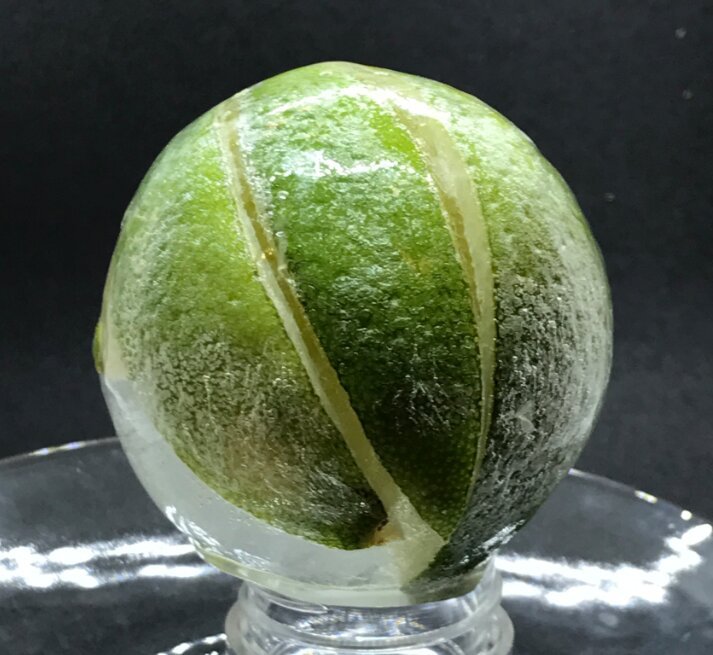 Using this method of directional freezing (developed here on Alcademics) with thermos containers and ice ball molds to maximize the clarity of ice balls, I have been playing around with putting objects inside ice spheres.
Using this method of directional freezing (developed here on Alcademics) with thermos containers and ice ball molds to maximize the clarity of ice balls, I have been playing around with putting objects inside ice spheres. 
